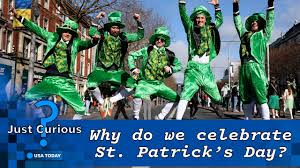St. Patrick’s Day, also known as the Feast of St. Patrick, is a cultural and religious holiday celebrated on March 17th each year. This day commemorates the death date of St. Patrick, the foremost patron saint of Ireland. However, St. Patrick’s Day has evolved into a global celebration of Irish culture, with people around the world participating in festivities such as parades, wearing green, and enjoying traditional Irish food and drinks.
The History of St. Patrick’s Day
St. Patrick, the patron saint of Ireland, was actually not Irish. He was born in Britain in the late 4th century and was kidnapped by Irish raiders at the age of 16. He spent six years in captivity in Ireland before escaping and returning to his family. After becoming a Christian, Patrick returned to Ireland as a missionary to spread Christianity among the pagan Irish. He is credited with using the shamrock, a three-leafed plant, to explain the concept of the Holy Trinity to the Irish.
St. Patrick died on March 17th, around the year 461, and this date has been commemorated as St. Patrick’s Day ever since. The holiday was originally observed as a religious feast day in Ireland and later became a public holiday in the early 17th century. Over time, St. Patrick’s Day has grown into a secular celebration of Irish culture and heritage, with parades, festivals, and other festivities taking place around the world.
Why Do We Celebrate St. Patrick’s Day?
St. Patrick’s Day is celebrated for a variety of reasons, both religious and secular. For Irish Catholics, the holiday is a time to honor their patron saint and celebrate their faith and heritage. The day is marked with Masses and other religious services, as well as traditional Irish meals and gatherings with family and friends.
In addition to its religious significance, St. Patrick’s Day has become an opportunity for people of all backgrounds to celebrate Irish culture and history. Many people wear green clothing and accessories, decorate their homes and workplaces with shamrocks and other Irish symbols, and participate in parades and other festivities. In some cities, rivers are even dyed green in honor of the holiday.
St. Patrick’s Day Traditions
One of the most well-known traditions of St. Patrick’s Day is wearing green. This custom is said to date back to the 17th century, when wearing green clothing was believed to make a person invisible to leprechauns, mischievous fairy-like creatures. Today, people all over the world wear green on St. Patrick’s Day as a symbol of Irish pride and solidarity.
Another popular tradition is the St. Patrick’s Day parade, which features marching bands, dancers, and other performers. The largest St. Patrick’s Day parade in the world takes place in New York City, where millions of spectators gather to watch the festivities. In Ireland, parades are also held in major cities like Dublin, Cork, and Galway.
Traditional Irish food and drink are also an important part of St. Patrick’s Day celebrations. Corned beef and cabbage, a dish made with salt-cured beef and boiled cabbage, is a popular meal on St. Patrick’s Day in the United States. In Ireland, a traditional St. Patrick’s Day meal might include dishes like Irish stew, soda bread, and colcannon, a dish made with mashed potatoes and cabbage or kale.
Conclusion
St. Patrick’s Day is a beloved holiday that celebrates Irish culture, history, and heritage. Whether you’re Irish or not, St. Patrick’s Day is a time to come together with family and friends, enjoy traditional Irish food and drink, and participate in festive activities like parades and wearing green. So don your shamrocks, raise a glass of Guinness, and join in the celebration of all things Irish on March 17th!

